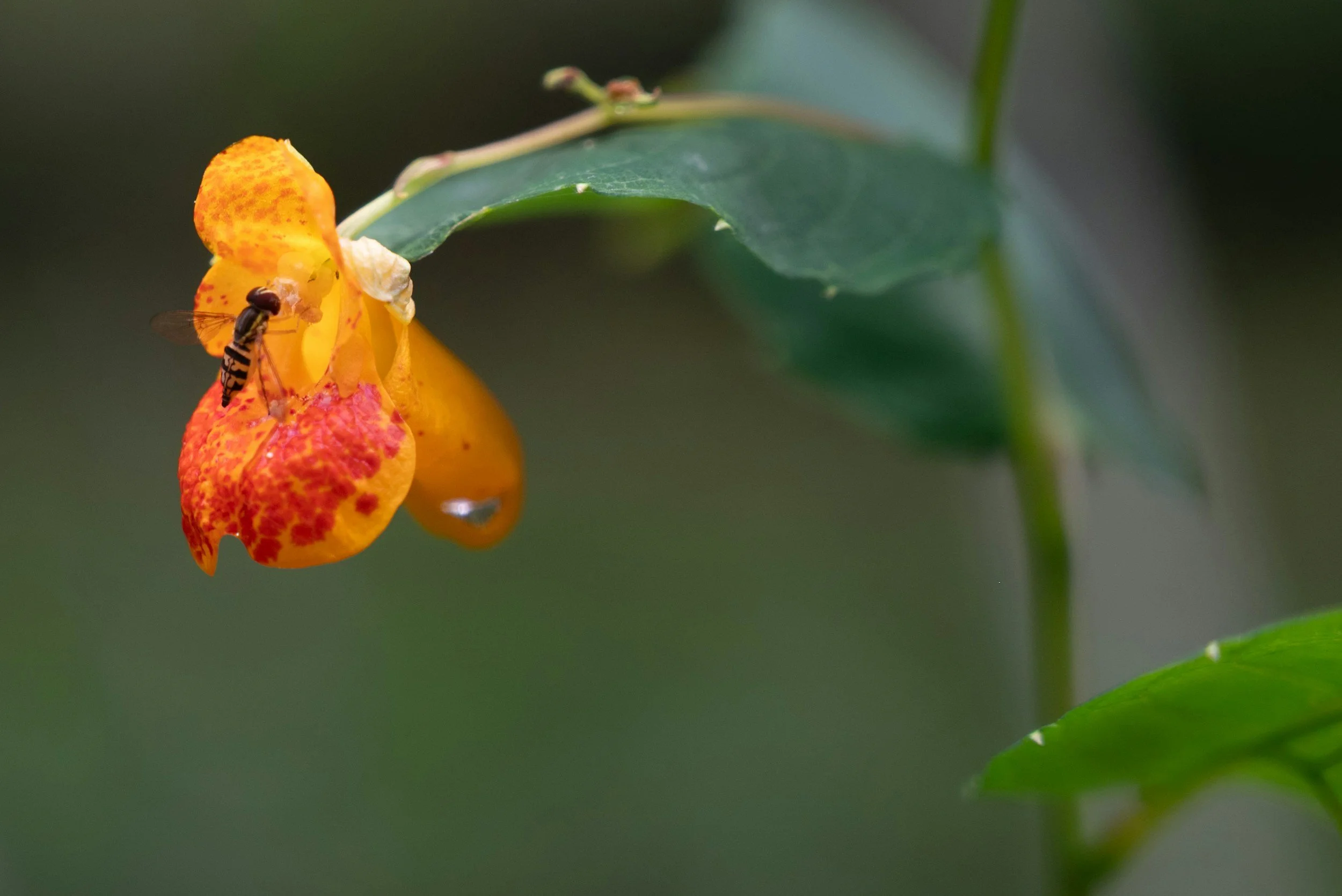Jewelweed
Jewelweed – Impatiens capensis
Why we love it at The Mindful Gem
Jewelweed is a cooling, clarifying, and highly soothing wildflower known for its remarkable ability to calm irritation, reduce redness, and support skin recovery. Rich in lawsone-like compounds, flavonoids, and mucilage, jewelweed has been traditionally used to ease rashes, stings, and reactive skin. Contemporary herbal research supports its effectiveness in reducing inflammation and neutralizing skin irritants, especially from plants like poison ivy (Journal of Ethnopharmacology, 2012, DOI: 10.1016/j.jep.2011.11.038). At The Mindful Gem, we forage jewelweed locally in Highlands, NC and create a gentle extract used in select soothing formulas to bring fresh, cooling relief and plant-led comfort to sensitive or inflamed skin.
Plant Overview:
Jewelweed (Impatiens capensis), also known as Touch-Me-Not, is a succulent orange-blossomed wildflower native to North America, especially abundant in moist forest edges, creek banks, and shaded woodlands. Its name comes from the way water beads on its leaves like sparkling jewels.
Parts Used & Traditional Uses:
The fresh aerial parts—stems, leaves, and flowers—are used to create extracts and poultices. Long relied on in Appalachian, Indigenous, and folk herbalism to soothe rashes, stings, burns, and reactions to environmental irritants.
Skin Benefits & Mechanism:
Cooling and anti-inflammatory, helping calm itching, redness, and irritation.
Contains natural compounds that counteract urushiol, the irritant found in poison ivy.
Mucilage provides a hydrating, protective layer that comforts stressed skin.
Supports gentle recovery for reactive or sensitized areas.
Key Benefits:
Calms irritation + itching
Cooling + anti-inflammatory
Protective mucilage hydration
Supports recovery from environmental irritants
Sources:
Lev-Yadun, S. (2012). “Herbal responses to irritants: Impatiens capensis activity.” Journal of Ethnopharmacology. DOI: 10.1016/j.jep.2011.11.038
Moerman, D. (2003). Native American Ethnobotany.
Foster, S. (1995). Herbal Renaissance.

